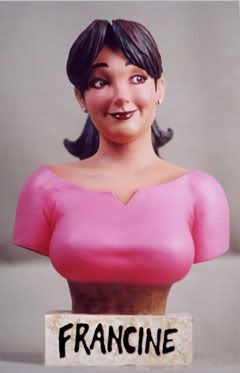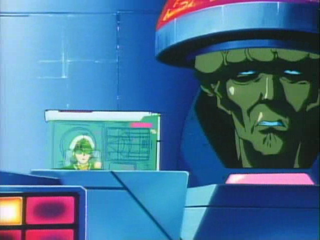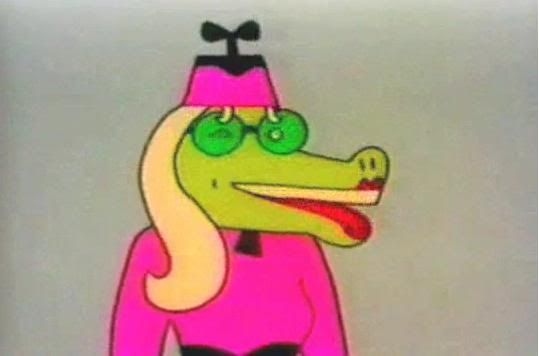I forgot to mark the third year of my unusual relationship with Robotech. This is unfortunate, but not entirely unexpected, given that I’ve just been recovering from a bad patch with the fandom.
Over recent months, the many contradictions and disappointments in my fandom and Macross fandom had started to wear on me, leading to a phase where I spent more time wishing that my fandom experience were different, and mulling over my critical feelings towards the same, than enjoying what reality had given me.
I began to be overwhelmed by my (still valid) critiques of the Robotech novels and comics that had once been the building blocks of my interest, and by several other things that I won’t get into right now. I never considered turning my back on the novels, but I subconsciously tried to downplay their importance in forming my own fandom.
Thankfully, my friend John “Zen72” Thomas then released the last episode of his Robotech podcast, The Protoculture Times. Much, much longer than the other episodes, it contained re-run interviews and new ones, and was a great way to go out with a bang.
Zen is far more enthused about the Robotech novels than I am, and hearing him wax poetic about them brought back the feelings I had once had, before critical analysis kicked in. It brought my “spirit” back, even if my criticisms remained.
This was despite the fact that when he interviewed James Luceno, one half of the writing group which penned these novels. When Zen opened e-mail questions for Luceno, with the disclaimer that Luceno didn’t remember much, I tried to put forth a general question, to look like I was not one of those who expected the writers to remember everything. I wanted to understand some of the decisions made about the portrayal of the Zentraedi, the good choices and the bad ones.
Still, the response I received was what I had expected: the plots which had had such an impact on my fandom were strongly suggested to have been decisions made off the cuff, or ones whose motivation was lost in the mists of time. Given the speed at which those books were written that’s not surprising, but it’s still sobering to be reminded of the difference between authorial intent and my reaction.
What that in turn might mean is that, more than any other fandom, I’ve been left to my own devices, to make the fiction I wanted to have out of the stuff I’ve been given, for official material alone always bothers me in some profound way. It’s a sad state of affairs, when usually I’m a shaking canon junkie, but that’s the truth.
Still, somehow, taking a dip back into the McKinneyverse was needed to rejuvenate my nerddom. It’s a figurative dip, though. My increased critical sensibility didn’t vanish, and it does
What the novels gave to me was an extension and completion of certain characters. You know that I like Exedore, Breetai, Rico, Bron, and Konda the best, and the novels, no matter how clumsily, or inaccurately, showed these characters had hearts and minds worth delving into, and could complete their character arcs from the original series. Most of the rest of fandom seems to treat these characters as plot devices, but it’s not unreasonable to see them otherwise.
I later began to realize that their treatment was in truth not entirely rosy, but there are still moments worth preserving. I can spend my time thinking about what I would have done, or I could take what is given, but it is much easier to call back those positive feelings for the novels, and their strength has returned.
No matter how disinterested I am in the rest of the Robotech continuations, it would be stupid to put on a stoic face and pretend I was never energized by these books. This kind of thing is hard to explain to other fans, but it’s good to remember how true it is for me. I still want to be that person who waxes poetic about Sentinels Exedore, or who thinks Kazianna Hesh is her favourite female Zentraedi character, and thought parts of End of the Circle were actually fascinating.
Over recent months, the many contradictions and disappointments in my fandom and Macross fandom had started to wear on me, leading to a phase where I spent more time wishing that my fandom experience were different, and mulling over my critical feelings towards the same, than enjoying what reality had given me.
I began to be overwhelmed by my (still valid) critiques of the Robotech novels and comics that had once been the building blocks of my interest, and by several other things that I won’t get into right now. I never considered turning my back on the novels, but I subconsciously tried to downplay their importance in forming my own fandom.
Thankfully, my friend John “Zen72” Thomas then released the last episode of his Robotech podcast, The Protoculture Times. Much, much longer than the other episodes, it contained re-run interviews and new ones, and was a great way to go out with a bang.
Zen is far more enthused about the Robotech novels than I am, and hearing him wax poetic about them brought back the feelings I had once had, before critical analysis kicked in. It brought my “spirit” back, even if my criticisms remained.
This was despite the fact that when he interviewed James Luceno, one half of the writing group which penned these novels. When Zen opened e-mail questions for Luceno, with the disclaimer that Luceno didn’t remember much, I tried to put forth a general question, to look like I was not one of those who expected the writers to remember everything. I wanted to understand some of the decisions made about the portrayal of the Zentraedi, the good choices and the bad ones.
Still, the response I received was what I had expected: the plots which had had such an impact on my fandom were strongly suggested to have been decisions made off the cuff, or ones whose motivation was lost in the mists of time. Given the speed at which those books were written that’s not surprising, but it’s still sobering to be reminded of the difference between authorial intent and my reaction.
What that in turn might mean is that, more than any other fandom, I’ve been left to my own devices, to make the fiction I wanted to have out of the stuff I’ve been given, for official material alone always bothers me in some profound way. It’s a sad state of affairs, when usually I’m a shaking canon junkie, but that’s the truth.
Still, somehow, taking a dip back into the McKinneyverse was needed to rejuvenate my nerddom. It’s a figurative dip, though. My increased critical sensibility didn’t vanish, and it does
What the novels gave to me was an extension and completion of certain characters. You know that I like Exedore, Breetai, Rico, Bron, and Konda the best, and the novels, no matter how clumsily, or inaccurately, showed these characters had hearts and minds worth delving into, and could complete their character arcs from the original series. Most of the rest of fandom seems to treat these characters as plot devices, but it’s not unreasonable to see them otherwise.
I later began to realize that their treatment was in truth not entirely rosy, but there are still moments worth preserving. I can spend my time thinking about what I would have done, or I could take what is given, but it is much easier to call back those positive feelings for the novels, and their strength has returned.
No matter how disinterested I am in the rest of the Robotech continuations, it would be stupid to put on a stoic face and pretend I was never energized by these books. This kind of thing is hard to explain to other fans, but it’s good to remember how true it is for me. I still want to be that person who waxes poetic about Sentinels Exedore, or who thinks Kazianna Hesh is her favourite female Zentraedi character, and thought parts of End of the Circle were actually fascinating.



